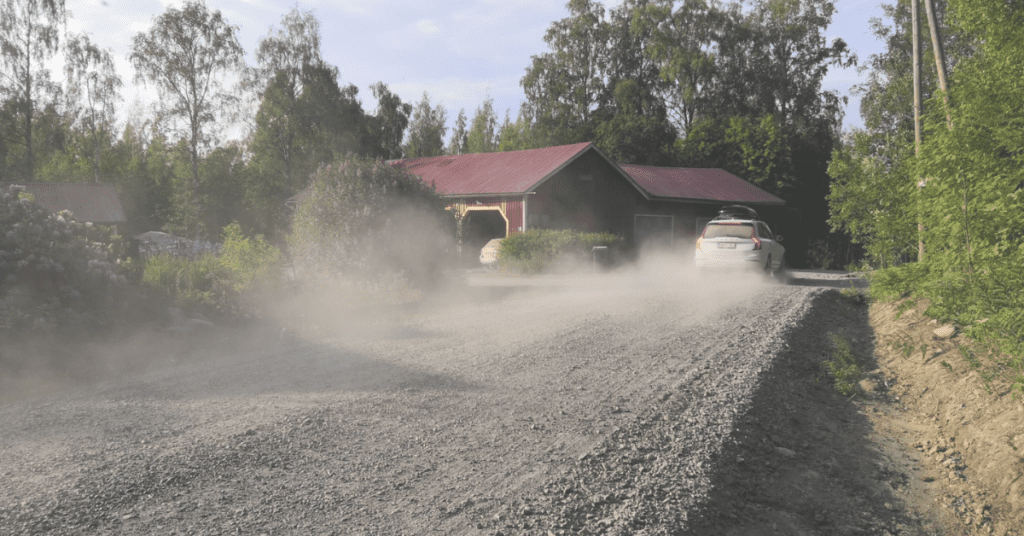Dust binding on gravel roads is a vital part of road maintenance that directly affects both the preservation of the road’s condition and the driving comfort of its users. It’s not just about preventing visible dust, effective dust control also brings significant benefits in terms of maintenance costs and the structural durability of the road.
Why dust binding is important?
During dry and warm periods, the surface layer of gravel roads easily dries out, causing fine materials in the wearing course to loosen and form dust. This dust impacts traffic safety, air quality, and the overall comfort of people living nearby. Dust binding improves visibility, reduces health risks, and makes the road more pleasant to use, especially in areas where housing, schools, or cultivated land are located close to the road.
Suitable dust binding agent has following benefits:
- Improved road condition and usability
- Retention of fine materials in the wearing course, reducing dust
- Slower formation of potholes and dislodged surface stones
- Reduced need for grading and gravel replenishment
- Better resistance to seasonal weakening (spring and autumn)
- Lower overall maintenance costs
- Enhanced comfort for road users and nearby residents
- Reduced contamination of crops and berry bushes from road dust
Timely maintenance is the key
Dust binding is typically carried out in spring, once the frost has left the road structure and while the surface still retains moisture, often alongside standard spring maintenance of the road network. If needed, treatments are repeated during the summer, especially in open or inhabited areas where dust causes challenges. Local conditions, such as land use along the road, influence both the need for dust binding and the scope of the measures.
Environmentally friendly dust binding for gravel roads
The traditional method of maintaining gravel roads involves spreading calcium or magnesium chloride, commonly known as road or summer salt, onto the surface. Salt binds moisture and slows the drying of the road. However, the environmental drawbacks of salting, especially in groundwater areas, near wells, and around farms or gardens, present a growing challenge.
Kemion offers environmentally friendly alternatives for dust binding that are particularly well-suited for sensitive areas where minimizing impact on nature, groundwater, and crops is essential. Our Eco-Binder product family includes effective and biodegradable solutions for dust control and road stabilization. They provide a salt-free option in areas where traditional salting is not desirable. We are also continuously developing new products and this summer, we’re testing Bio-Binder, a new range of biopolymer-based solutions for gravel road dust control.
Dust binding is an investment in the future of the gravel road
Proper care of gravel roads, including dust binding, extends road lifespan and improves driving comfort. It’s also a responsible choice that helps prevent road network degradation and reduces environmental impact.
Our expert solutions are based on years of experience and a deep understanding of our customers’ real needs. Contact us to learn more about our dust binding products, we’re here to help you choose the right solution!





